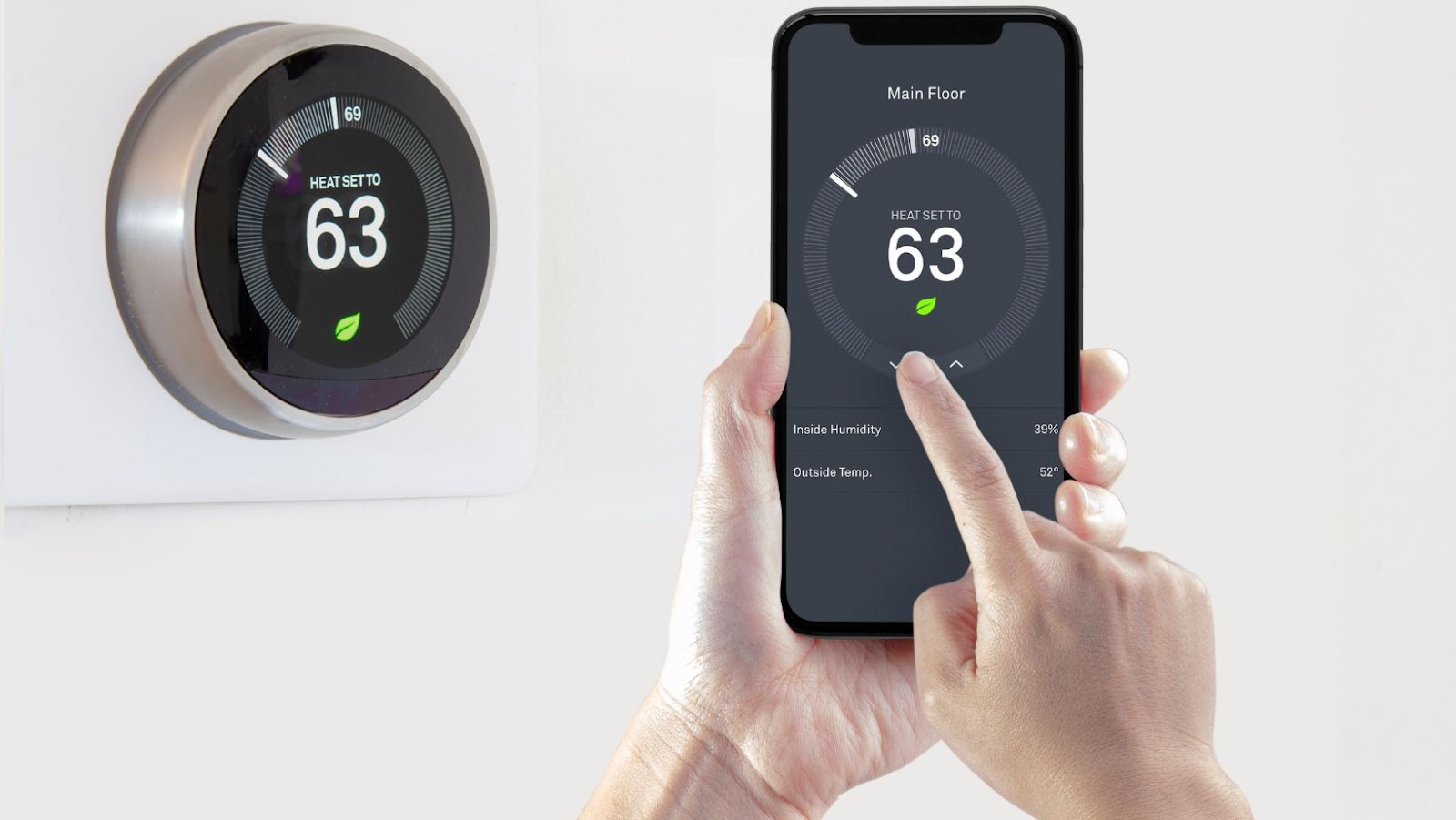A smart thermostat can be a convenient upgrade for your home’s heating and cooling system. But how does a smart thermostat work exactly?
Smart thermostats use sensors and algorithms to learn your temperature preferences, schedule, and habits. They can detect when you’re home or away, adjust the temperature accordingly, and save energy by reducing unnecessary heating or cooling.
Smart thermostats also offer a variety of features, such as voice control and smartphone integration, allowing you to adjust the temperature from anywhere. Overall, a smart thermostat is a smart investment that can save you money and energy in the long run.
Inside a Smart Thermostat
Smart thermostats utilize advanced technology to learn from your heating and cooling preferences and automatically adjust your home’s temperature to meet your specific needs. Here’s an inside look at how smart thermostats work:
Sensors: The thermostat is equipped with sensors that detect temperature, humidity, and occupancy in your home. These sensors collect data, which is then analyzed and used to adjust your home’s heating and cooling systems.
Connectivity: Smart thermostats are connected to the internet, which allows you to access and control them through your smartphone, tablet, or computer. Some devices can also be controlled using voice commands through a virtual assistant.
Machine learning: Smart thermostats use machine learning algorithms to analyze your temperature preferences and schedule, as well as weather data, to optimize heating and cooling in your home. Over time, the thermostat learns your habits and automatically adjusts the temperature to match your preferences.
Automation: Smart thermostats use automation to optimize energy consumption and reduce utility bills. For example, they can automatically adjust the temperature when you’re away from home and turn off the heating or cooling system when a window or door is opened.
Compatibility: Smart thermostats are designed to be compatible with most heating and cooling systems. However, it’s important to check your system’s compatibility before purchasing a smart thermostat to ensure it’s compatible.
In conclusion, smart thermostats are a modern solution to energy efficiency and convenience. They use advanced technology to learn from your habits and optimize your heating and cooling system. By utilizing sensors, connectivity, machine learning, and automation, smart thermostats can save you money on your utility bills while providing more comfort and control.
How Does A Smart Thermostat Work
Smart thermostats have grown rapidly in popularity over the past few years due to their energy saving capabilities and convenience. These thermostats can connect to your home’s Wi-Fi network and be controlled remotely through a smartphone app. But the question still stands – how does a smart thermostat work?
One key aspect of smart thermostats is their use of machine learning. Machine learning is an artificial intelligence (AI) application that allows technology to learn and improve from experience without being explicitly programmed. This means that as you use your smart thermostat, it will learn your preferences and habits to optimize your home’s temperature control.
The machine learning algorithms employed in smart thermostats analyze various data points to create a personalized schedule. These data points can include your home’s location, temperature, and humidity, as well as your daily routine and habits. With this information, the smart thermostat can automatically adjust your home’s temperature settings to maximize comfort while minimizing energy usage.
Another key feature of smart thermostats is their ability to “learn” how long it takes to heat or cool your home. This means that it can turn on or off your HVAC system at just the right time to reach your desired temperature at the right time, so you don’t waste energy or money.
But it’s not just about learning your habits and scheduling adjustments – smart thermostats can also be programmed to integrate with other smart home systems. This means that if you have smart lights or smart locks, your smart thermostat can work in conjunction with these systems to create an all-encompassing energy management platform.
In conclusion, smart thermostats incorporate machine learning algorithms and other intelligent programming to analyze your home’s data and optimize temperature control. By using smart thermostats, you can save energy and money while enjoying the convenience of a customizable, personalized temperature control system.
Integration with Smart Home Systems
Smart thermostats offer the convenience of integrating with smart home systems to increase the functionality of your home. Here’s a quick overview of the integration process and the benefits of integrating your smart thermostat with your home automation system:
Integration Process
Integrating smart thermostats with smart home systems varies depending on the brand and model of each component. However, most smart thermostats are compatible with the major home automation platforms such as Amazon Alexa, Google Assistant, Apple HomeKit, and Samsung SmartThings.
To integrate a smart thermostat with your smart home system, follow the manufacturer’s instructions on connecting the devices. Typically, the instructions involve linking the devices through compatible apps and enabling voice control. Once the devices are connected, you can control your smart thermostat using voice commands or the app on your smartphone, tablet, or computer.
Benefits of Integration
The integration of smart thermostats with smart home systems offers several benefits, including:
Increased Convenience: By integrating your smart thermostat with your smart home system, you get to control the temperature of your home using only your voice or the app on your mobile device.
Increased Energy Efficiency: The integration process allows your smart thermostat to learn your habits and adjust your schedule automatically. By doing so, your smart thermostat can optimize energy usage and reduce your energy bills.
Integration with Other Smart Devices: You can create smart routines that combine your smart thermostat with other smart home devices such as smart lights, security systems, and smart locks. This provides you with a personalized and seamless experience that can simplify your life.
Remote Access: By integrating your smart thermostat with your smart home system, you can control your home’s temperature even when you’re away. This is especially useful if you forgot to adjust the temperature before leaving home.
Integrating smart thermostats with smart home systems provides homeowners ultimate convenience, energy efficiency, and customization options. It’s a simple but effective way to make your home smarter and your life easier.
Conclusion
In conclusion, smart thermostats offer an efficient and convenient way to control indoor temperatures while saving energy and reducing utility bills. By utilizing advanced sensors, algorithms, and machine learning technologies, smart thermostats can learn your habits and preferences, and automatically adjust the temperature to create a comfortable environment for you and your family.
Whether you choose a standalone or smart thermostat integrated with your home automation system, the core principle remains the same. Smart thermostats collect data from multiple sources, including temperature sensors, occupancy sensors, weather forecasts, and user inputs, and then use this data to optimize heating and cooling schedules based on your needs and preferences.
Some of the key benefits of using a smart thermostat include:
– Energy savings: by optimizing temperature settings based on your daily routines and occupancy patterns, smart thermostats can help reduce heating and cooling costs by up to 20%
– Remote control: with a smart thermostat, you can control your HVAC system

